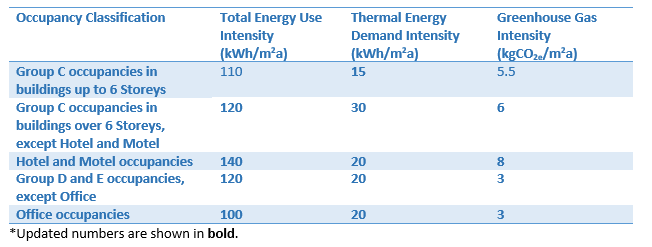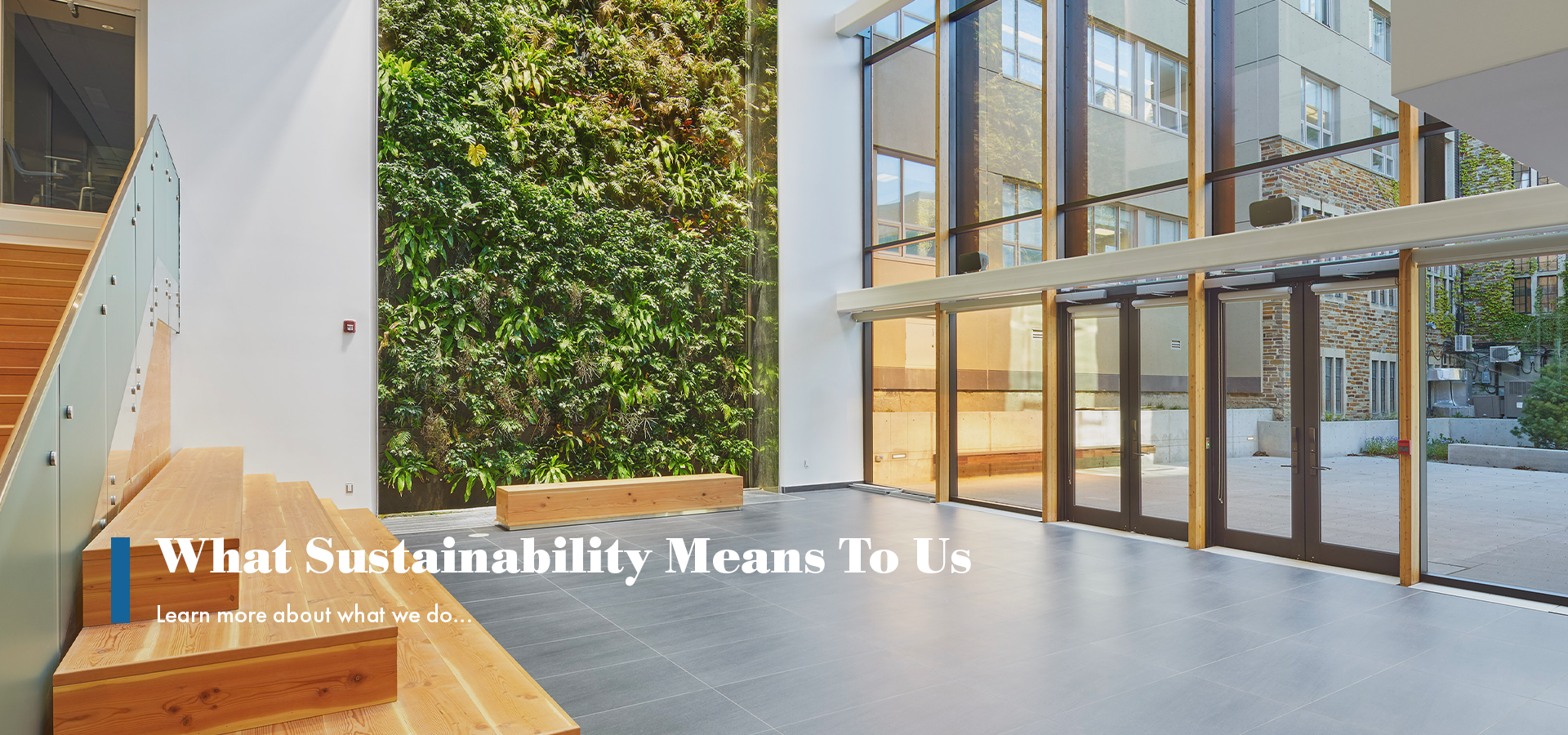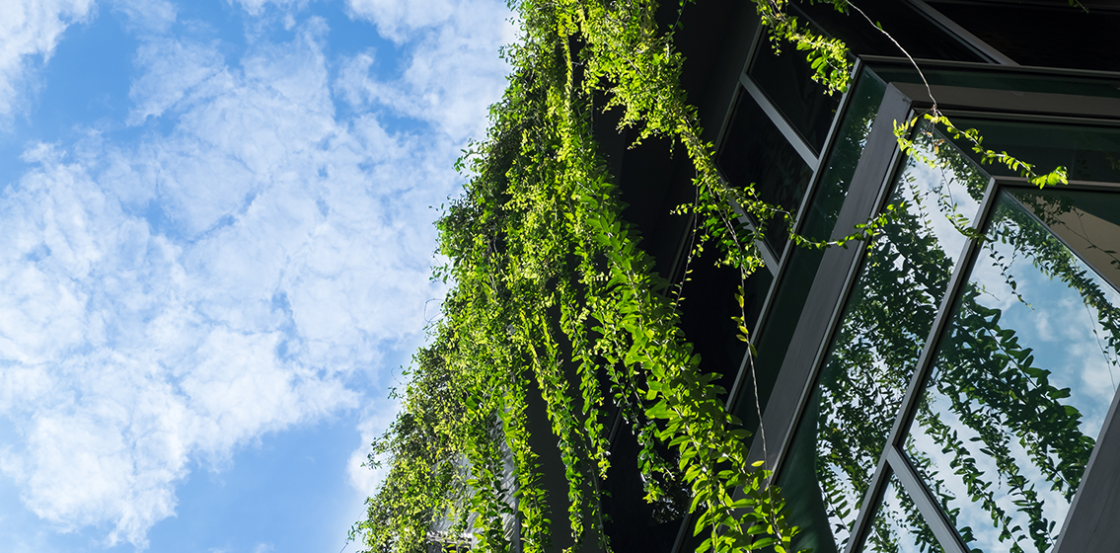New year, new sustainability regulations impacting the building industry. Christine Chow takes us through the changes and what it means for building projects.
Welcome to 2022 – a year where we make bigger strides toward our national climate change goals! There are many exciting regulatory changes happening, and some of them will likely impact your building projects. Keep this post handy for a summary to these changes, as well as rollout dates to help you plan any upcoming project schedules.
Vancouver Building By-Law (VBBL)
Effective date: January 1, 2022
What’s changing:
1. Low-rise (1-3 storey) Residential Buildings
Improved envelope efficiency and requirements to reduce emissions for new, low-rise homes. Applicants may use one of three options to comply:
- Prescriptive performance targets for envelope and mechanical components
- Compliance based on meeting Thermal Energy Demand Intensity (TEDI), Mechanical Energy Use Intensity (MEUI), and Greenhouse Gas Intensity (GHGI) targets verified by energy modelling
- Compliance granted upon Passive House Certification (third party)
2. All other buildings types (commercial, residential, hotel, and other uses etc.)
Significant changes to the maximum energy use and emissions intensities (Total Energy Use Intensity (TEUI), TEDI) as outlined in the following table:

Table 10.2.2.5.A1 Maximum Energy Use and Emissions Intensities
- Buildings and major occupancies designed and constructed in conformance with the Passive House Standard will satisfy Building Code requirements in lieu of requirements listed in the table above
- Projects connected to a Low Carbon Energy System will receive a relaxation of the targets by conforming with Table 10.2.2.5.C found in Division B of the VBBL
We’ll be reviewing the changes to the VBBL in more detail, so keep an eye out for a future blog.
Toronto Green Standard (TGS) Version 4
Effective date: May 2022
What’s changing:
The updated version of the TGS includes a large number of changes. These modifications consist of shuffling requirements to better group-related topics, Tier 2 requirements moving to Tier 1, and the introduction of new requirements.
Some important changes to highlight:
- Advance zero emissions buildings so that Tier 2 energy performance is now Tier 1 (required) and City-owned facilities meet net-zero emissions requirements
- Require embodied carbon accounting for Tier 2 and 3
Increase electric vehicle ready provisions and signal the direction for 100% EV-ready in Tier 2 - Better integration of the Water and Ecology sections with requirements for green streets and green infrastructure to advance higher stormwater management and resilience
- A requirement for electric bicycle parking spaces (e-bike parking) has been added for multi-unit residential buildings; the low-rise standard includes the requirement for one EV outlet for each parking space; and full EVSE (charging stations) are required for City-owned new facilities
Click below for approved versions of the Toronto Green Standard V4:
Mid-high Rise Residential and Non-residential New Developments
Low-rise Residential Development
City Agency, Corporation and Division-owned Facilities
Ottawa’s High Performance Development Standard
Effective date: Summer 2022
What’s changing:
Over the last two decades, many municipalities across Ontario have instituted a “green development standard”. This has proven to be an effective tool in advancing the industry’s sustainability and resiliency design in new developments. As of this summer, Ottawa will have a Higher Performance Development Standard of its own!
The High Performance Development Standard will apply to projects requiring Site Plan or Draft Pan Subdivisions Applications. Projects that are only subject to building permits are excluded. The standard has been developed as a tiered system, where Tier 1 includes mandatory requirements, and pursuing Tier 2 or higher is voluntary. Incentives to encourage projects to adopt Tier 2 or higher performance are under development.
Tier 1 will include requirements for the following:
- Building Energy Efficiency
- Site Plan Accessibility
- Fresh Air Intake
- Tree Planting
- Plant Species
- Exterior Lighting
- Bird-Safe Design
- Sustainable Roofing
- Cool Landscape and Paving
- Common Area Waste Storage
- Electric Vehicle Parking
- Bicycle Access and Storage
For draft versions of Ottawa’s High Performance Development Standard click HERE.
Wide-Ranging Impacts
Last year, Canada committed to cutting its greenhouse gas emissions by 40-45 per cent below 2005 levels by 2030 – an ambitious goal. As national climate change initiatives ramp up, so too does the focus on sustainability and resiliency design in the building industry. The changes outlined above demand higher performance from new buildings, and range from energy efficiency and emission requirements, through to surrounding environmental design aspects. It’s important you’re aware of the potential impact on future developments, as well as improvements to existing buildings that may now be incentivized.
Christine Chow’s project experience includes institutional buildings, offices, healthcare, sports and recreation, residential projects, and pursuit projects from both compliance and proponent perspectives. She leads Footprint’s Life-Cycle Assessment Services and is one of the leads of the Sustainability Consulting & Certification team. Christine is also a member of CaGBC’s Technical (Sites and Water) and Educational advisory groups.


